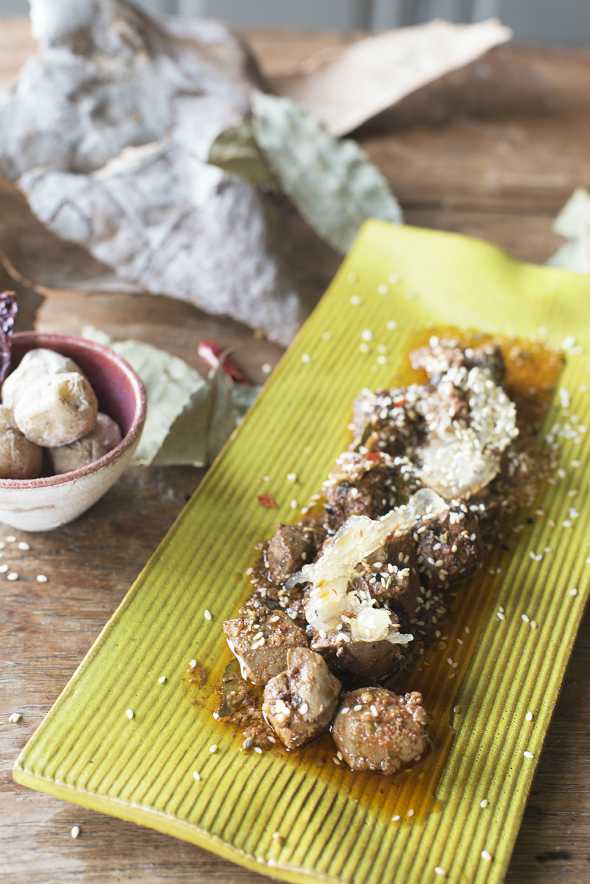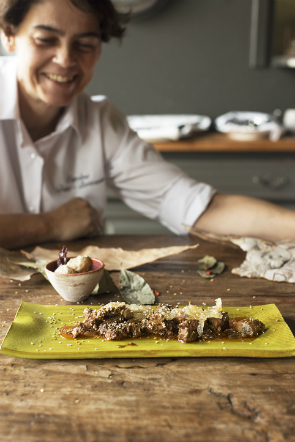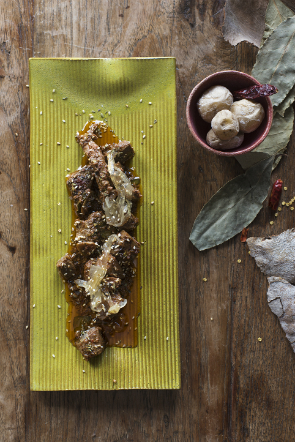1 Kilo beef liver cut up into chunks
1 dessert spoon of cumin
1 dessert spoon of thyme
1 laurel leaf
1 coffee spoon of oregano
2 dessert spoons of sesame seeds
A shot of vinegar
1 garlic bulb
2 roasted red peppers
2 dessert spoons of cumin
4 laurel leaves
2 chilli peppers
1 soup spoon of sweet paprika
2 soup spoons of olive oil 04º
Salt
2 onions
1/2 glass of water
1/4 of sugar
Salt

First of all the liver has to be marinated. A mash is prepared out of the garlic bulb, two roasted red peppers, cumin, laurel leaves, chillies, oil, salt and paprika. We marinate the liver with this mixture and let it soak in for four hours.
After this period, fry the liver in warm oil. Stir it around well and add a laurel leaf, a small spoon of thyme, another spoon of cumin and a further spoon of oregano. We finally add a shot of vinegar. The whole mix is sautéed until the liver is done.
In the meantime, we cut up strips of onion, place them in a pan, and caramelize them on a slow heat with half a glass of water and a quarter glass of sugar, until we see that the onions are tender and lightly golden in colour.
We present the carajacas with the caramelized onions on top, and the sesame seeds sprinkled all over. This dish goes really well with papitas arrugadas potatoes.


Carolina Díaz-Bertrana explains to us how her recipe came about:
"This dish is based on an old recipe passed down by my mother and her mother. I learnt all I know from their cooking, flavours and wisdom. Without their wise tips I wouldn’t have got to where I am today. They were my best teachers and thanks to them my cuisine has such a tasty seal.
With the aim of giving a more contemporary feel to this traditional Gran Canarian recipe, I decided to add the caramelized onion to offset the bitter taste of the liver, while the toasted sesame seeds attempt to give the dish a taste of yesteryear, from when I was just young child, when they used to crush corn in my mother’s house."

Our 2nd ‘Dish-enhancing’ secret ingredient
Kitchens all around Gran Canaria hold a closely guarded secret. Their cooking methods have the advantage of having the superb Gáldar onions at their disposal, grown at this northwestern location on the island.
There are white onions, ideal for boiling and frying, and red onions to spice up salads. But onions they are, large in size and always of the highest quality when they reach family larders from the town of Gáldar.